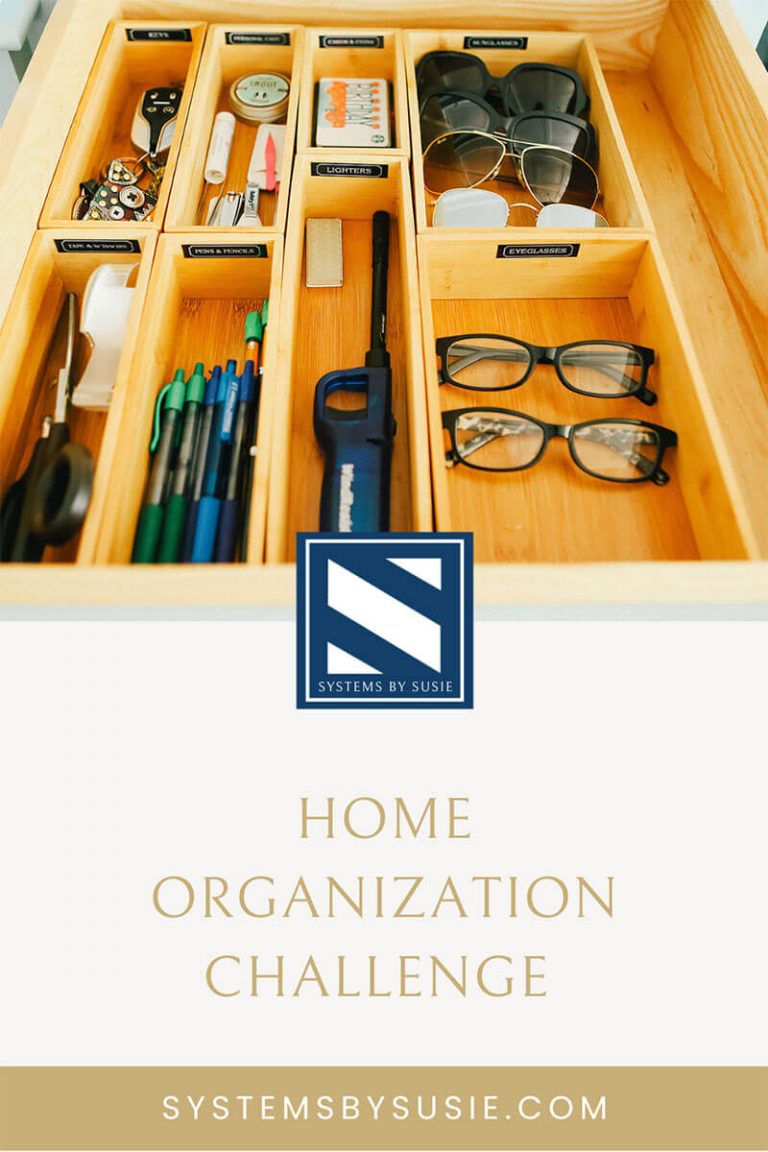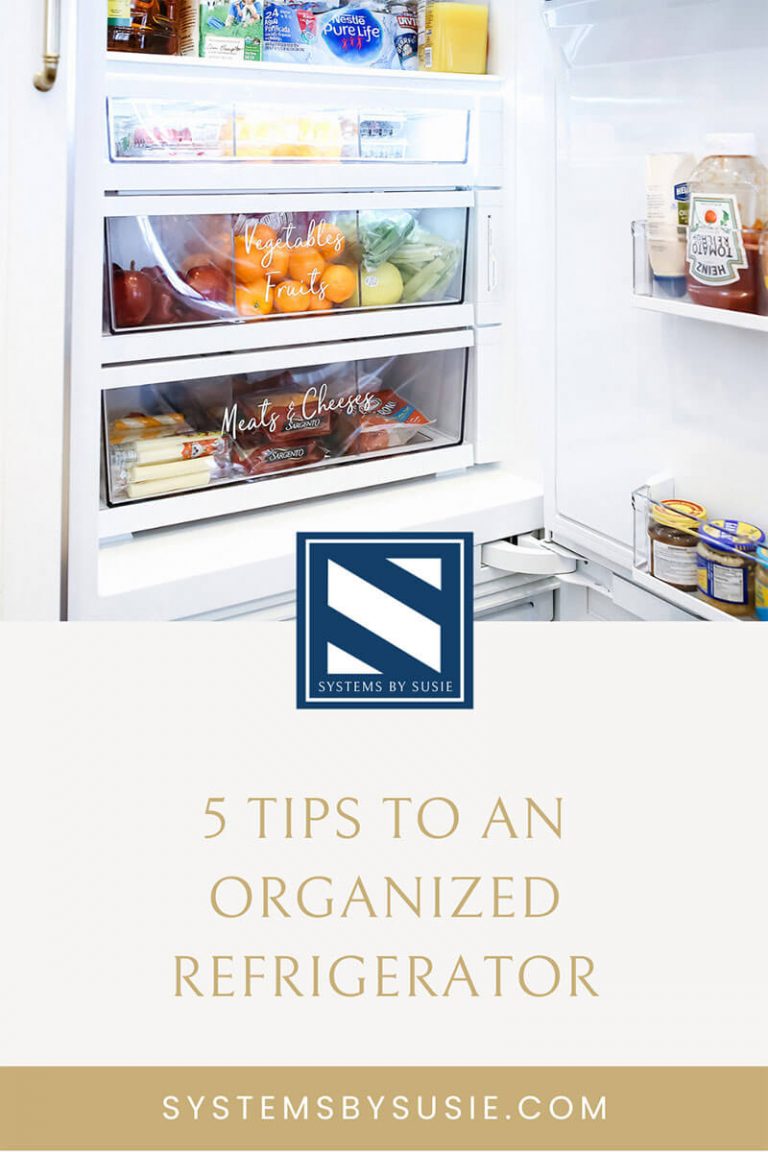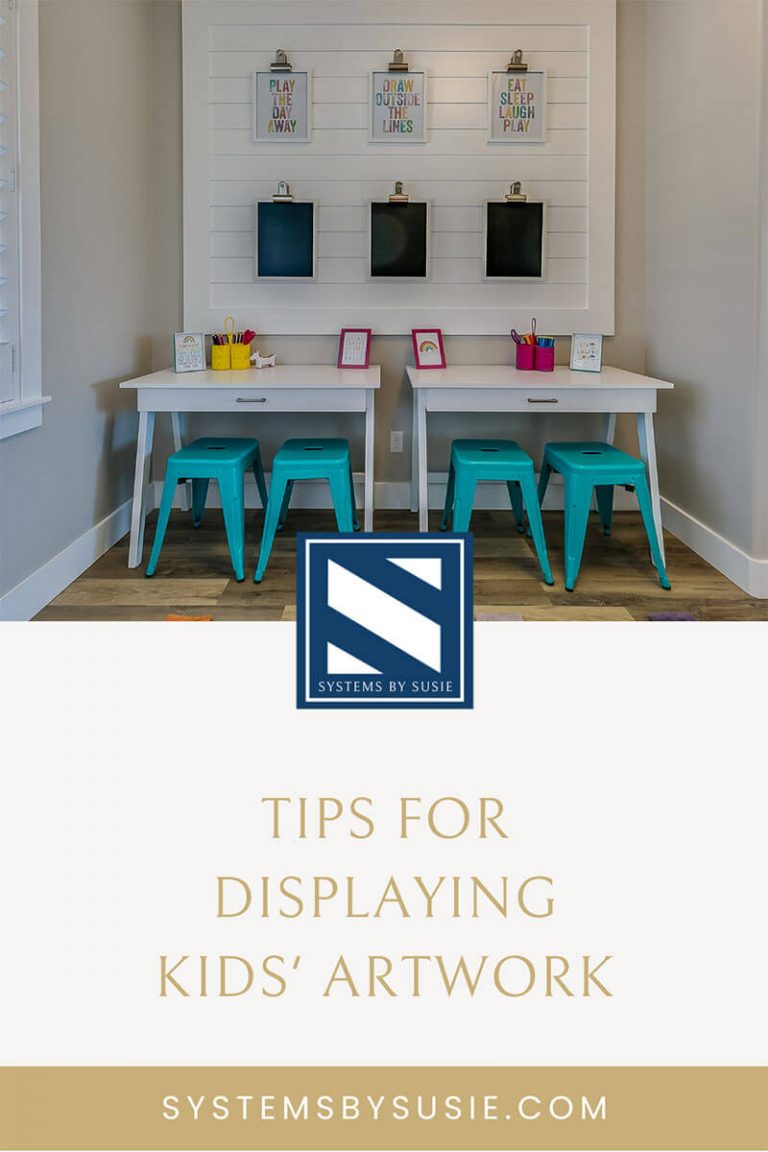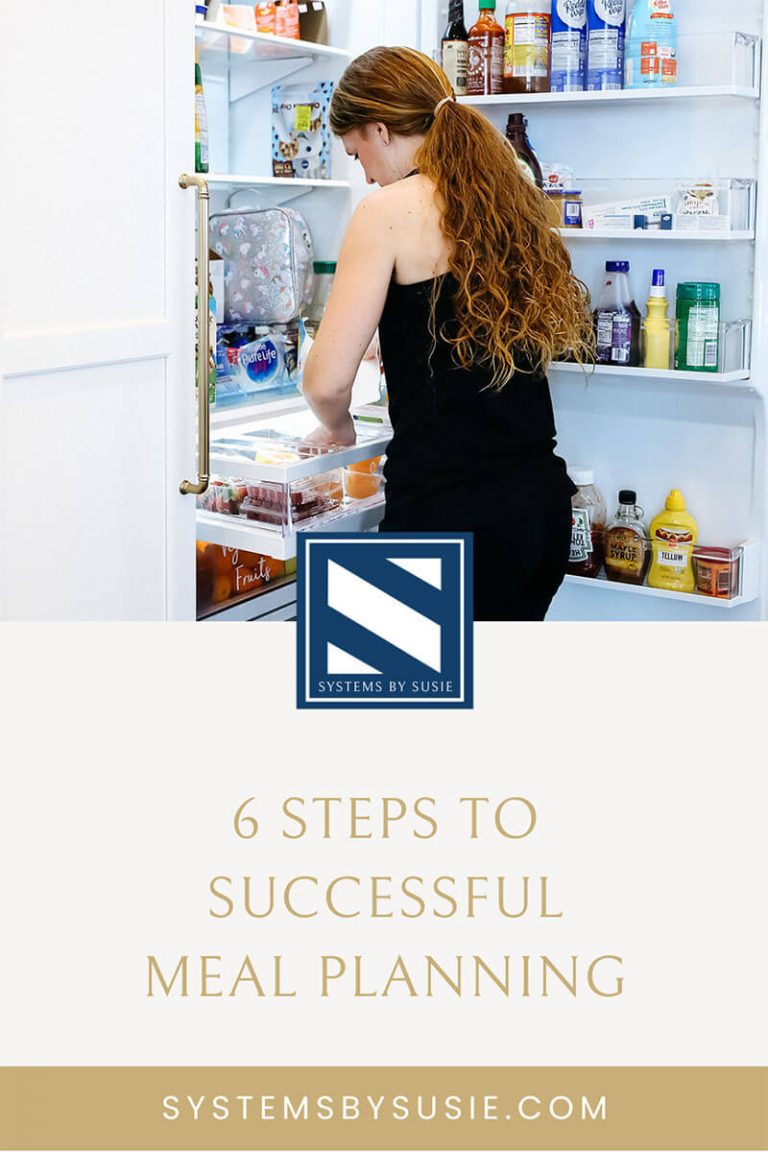Keeping Kids Organized at School
Teaching your kids to do laundry.
Teaching your kid to cook a few basic meals and properly load a dishwasher.
Teaching your kids how to thoroughly clean a bathroom.
Teaching your kid to setup a doctor’s appointment or how to order food.
Teaching them to navigate an airport.
These are all things we’ve talked about on the blog to help you work yourself out of a job, while at the same time guiding your kids to the independent life they will one day have.
This post is a little bit different, though – a bit more meta. We’re going to focus on how to teach them one of the basic tenants of organization itself: breaking large tasks into smaller ones, specifically as it relates to getting organized for school.
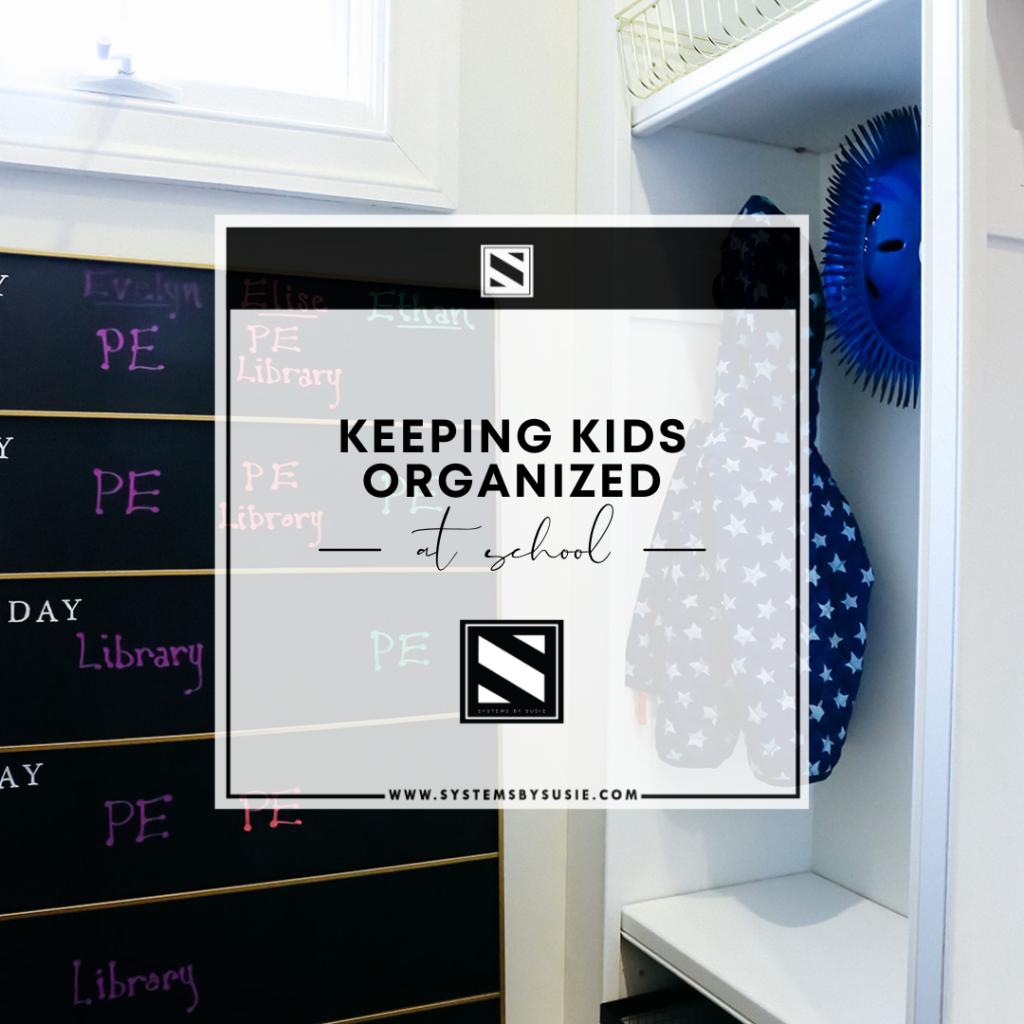
Start at Home and Start Young
Routines around school can start as early as age 2. Toddlers thrive on routine, and with guidance and practice, they will soon be well on their way to mastering the “get out the door” process each morning.
Set up zones that make a morning routine easy.
Pick out clothes for the week for littles, so they know exactly what to put on each morning. Use a daily drawer in their bathroom, so they know exactly what they need to do (this can be as simple as a hairbrush, toothbrush, and tooth paste for young kids). No drawers? Try a caddy.
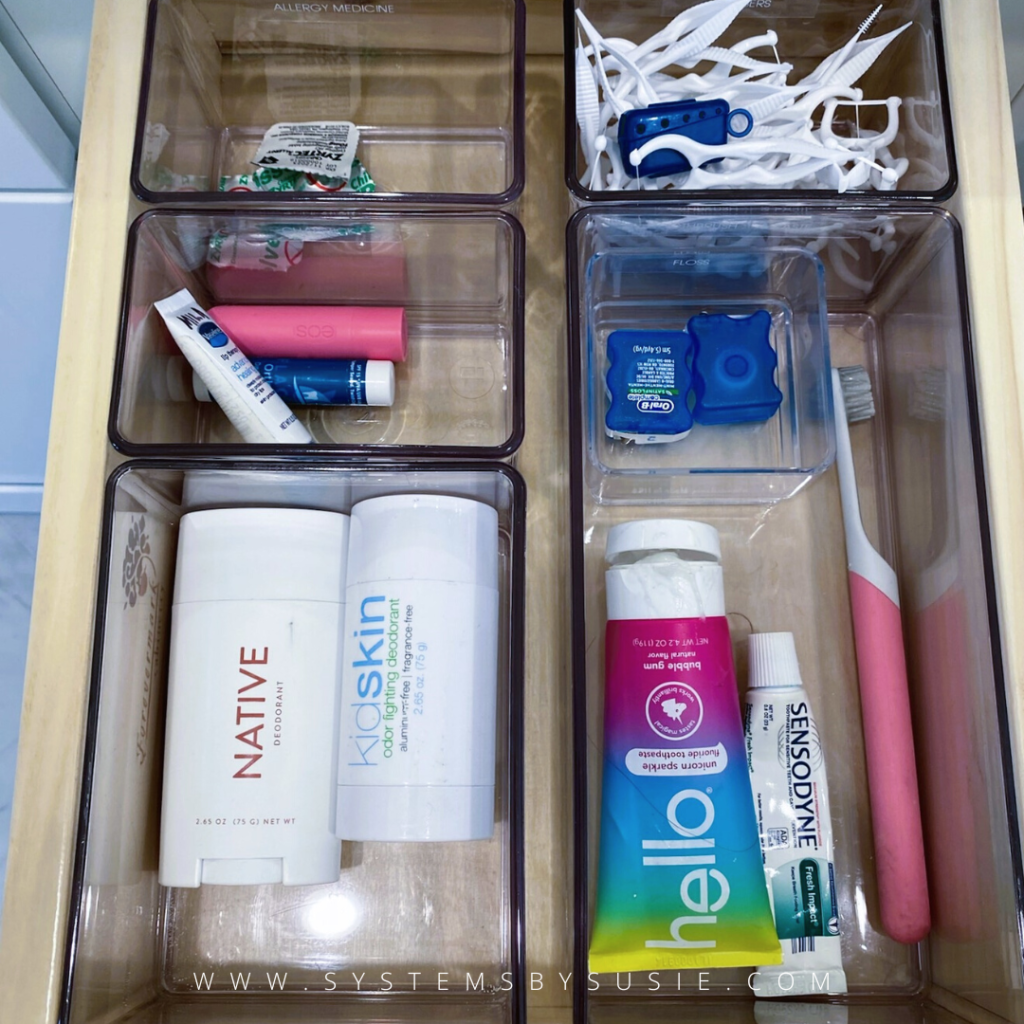
Have a dedicated area for backpacks and shoes; put their lunch in the same place everyday for them to grab on their way out the door. (For older kids, set up a lunch & snack station so they can help make their own lunches as part of their night or morning routines.)
When they come home in the afternoon, guide them through an organized routine as well. Shoes off and in the basket. Lunch box on the counter. Homework out of the backpack on on the table (or counter, or desk, whatever spot works best for your family). Homework gets done first, then free time, dinner, etc.
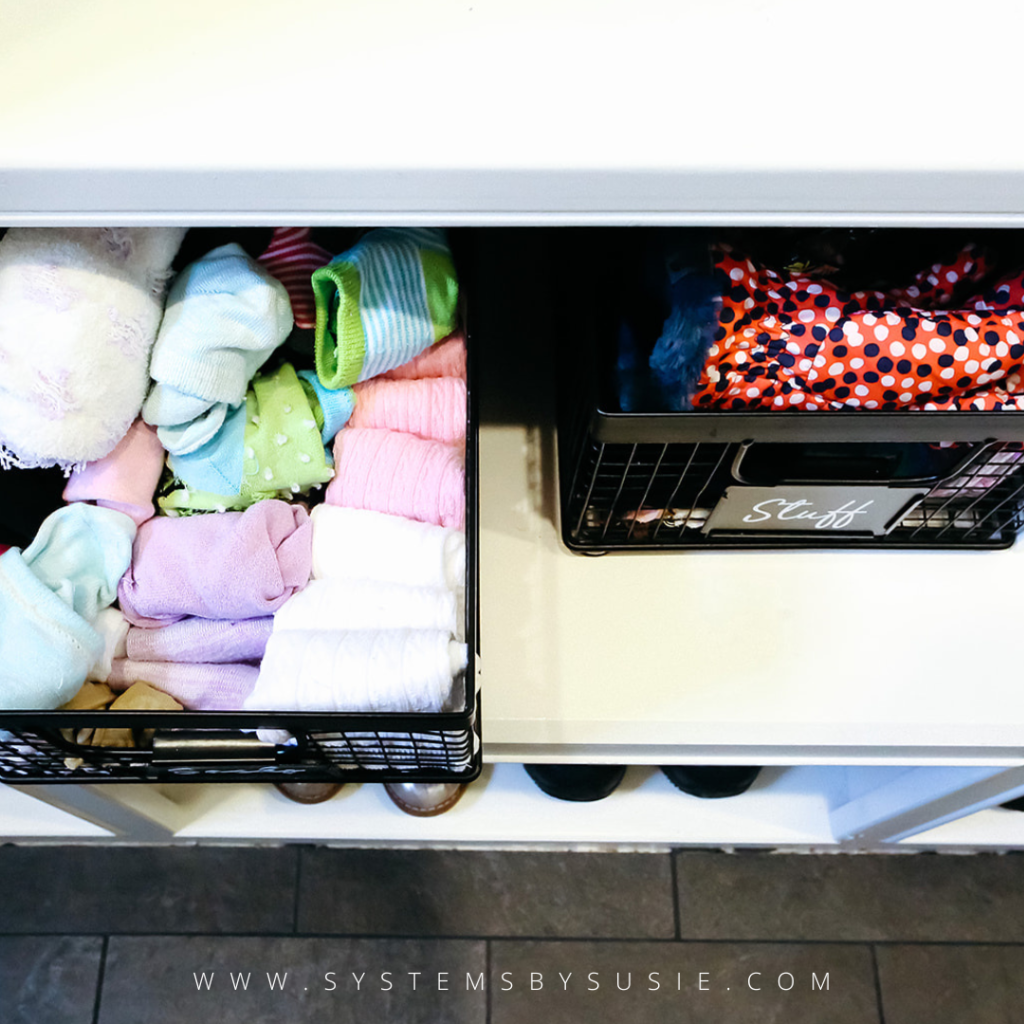
As activities begin with older kiddos, modify to include them. Maybe the routine is split with a practice in between, or maybe it starts later in the evening because of a game. It can be flexible, as long as it follows the same basic pattern each day.
Checklists
For these littles (and, honestly, even for my teens) checklists are a dream. Once you’ve walked them through the routine and the checklist several times, they can start to do it on their own by following their list. Start with pictures, and as they learn to read, add words.
Consider checklists for:
- Morning routine
- After-school routine
- Bedtime routine
- Activities
I even have a checklist for my teens’ skin care routine posted in the bathroom they share! (They work!) Checklists start the process of transferring the responsibility for getting ready from you to your kiddo. No more nagging, just a simple list of expectations that is neutral and consistent.
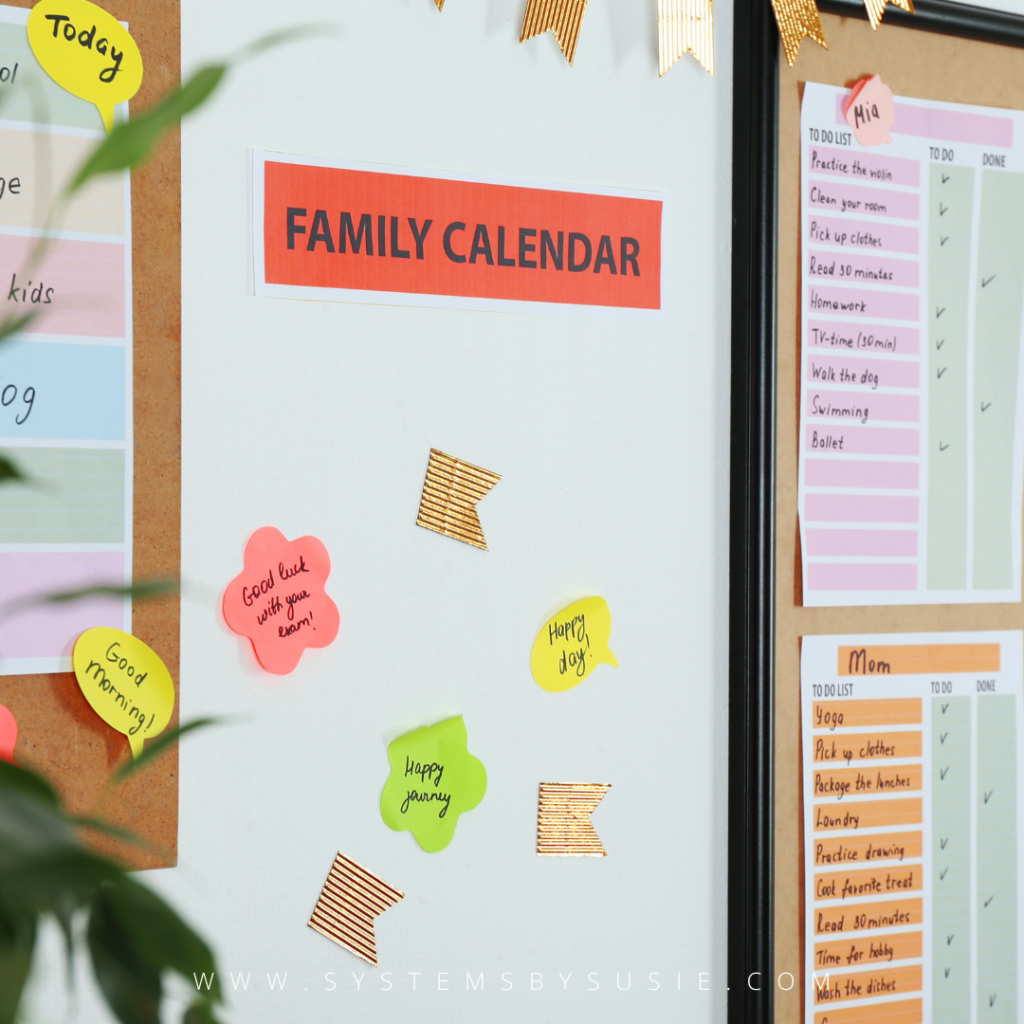
Another complement to checklists is visual calendars. Routine or special events can be added to a simple weekly calendar so that as they learn to keep track of days, they know what to prepare for each morning. If your schedule is particularly hectic, you may even consider having a checklist for each specific day of the week. This can work well if you often don’t have time to come home between school and activities and need to do a lot of morning prep. Just laminate them and secure them together with a key ring. Hang it on a hook near your door or in the kitchen.
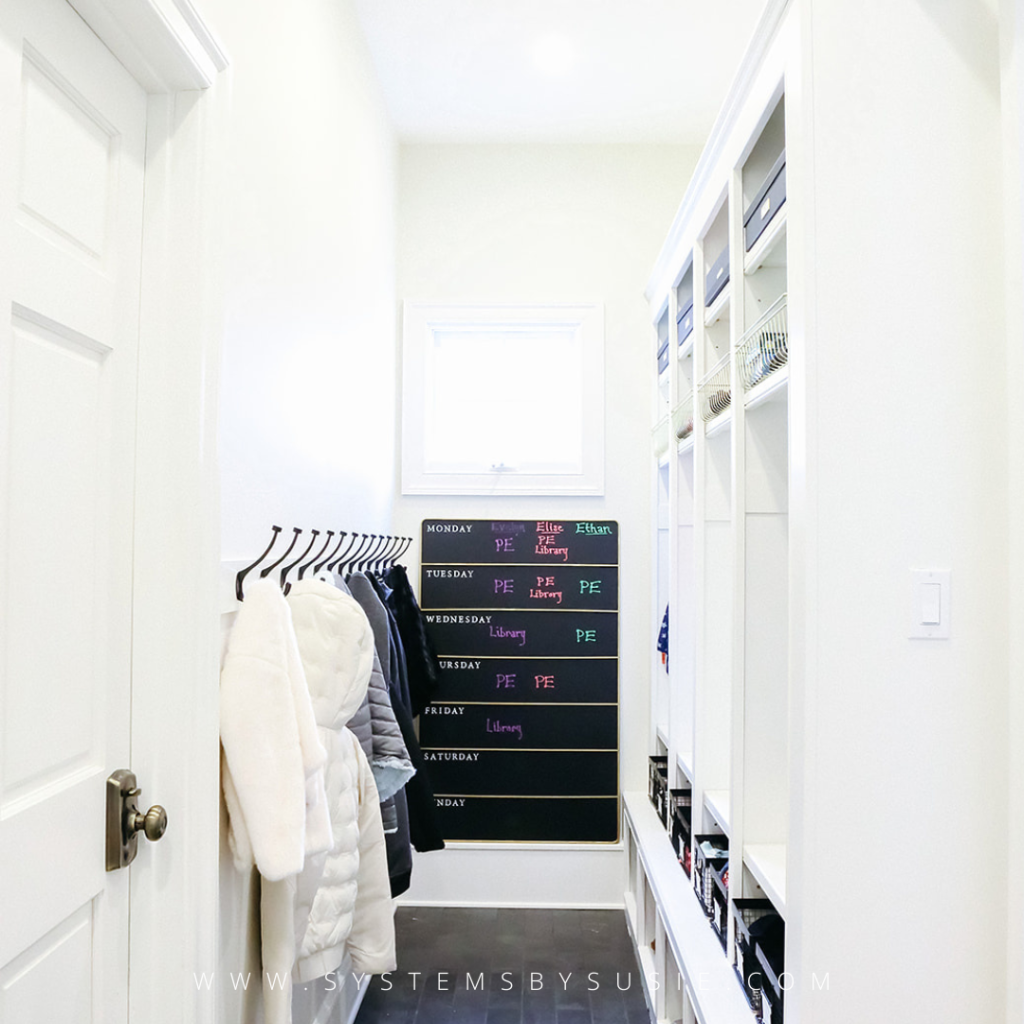
Keeping a Calendar
You may be thinking to yourself, this all sounds great, but my middle or high-schooler has so much homework for each class and so many activities and events that there’s no way simple checklists are going to help keep them organized. And I would agree. At a certain point, deadlines loom and projects take days or weeks to complete, not just a few minutes after school.
At this stage, don’t abandon the checklist. That visual reminder to make sure you have your homework before walking out the door can still be very helpful (and keep you from having to constantly run forgotten items to the school)! But it may be time to add them to the digital family calendar, or invest in a really good planner if they prefer an analog system. (The latter is a great option for kids who don’t have phones yet.)
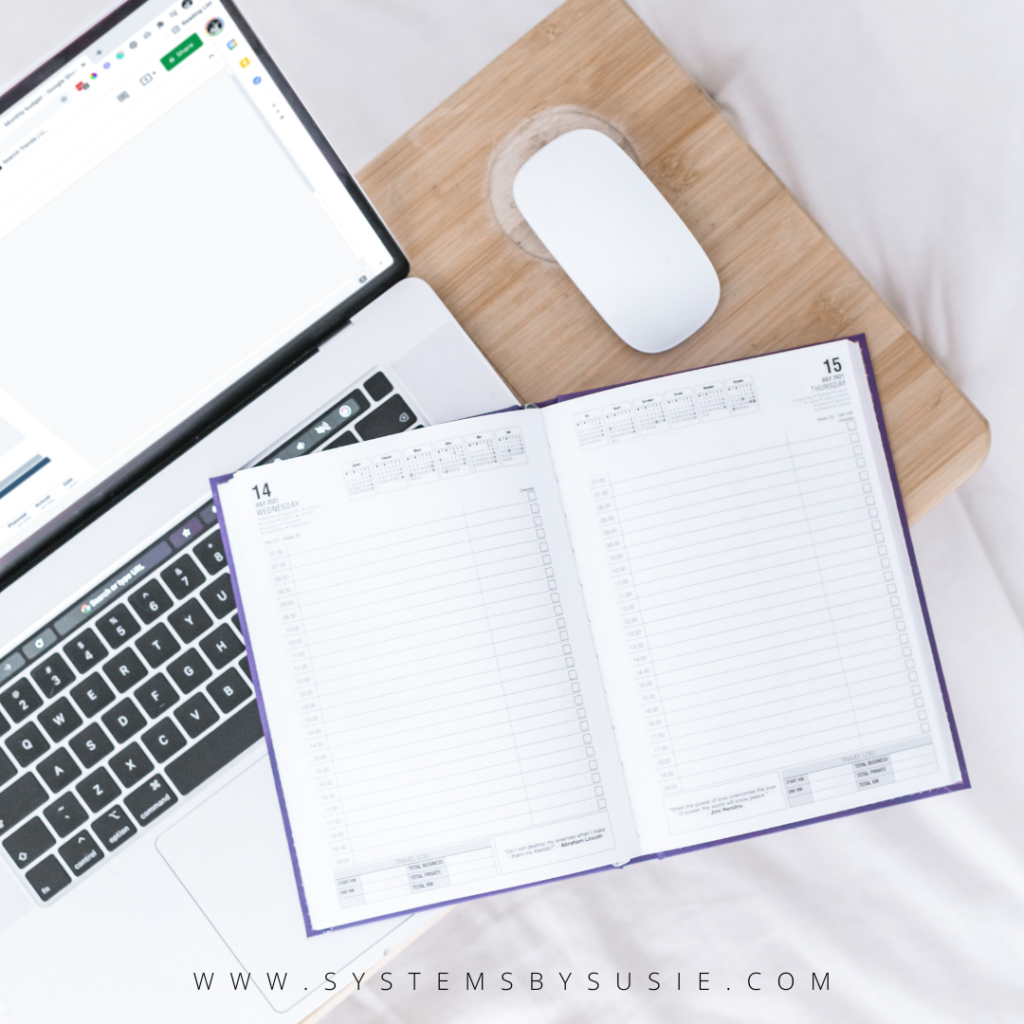
Digital calendars and planners can be helpful for breaking down larger tasks visually, combating the procrastination we all struggle with from time to time. When you put in a due date for a paper or add a big test that’s coming up, you can take a few extra minutes to map out smaller tasks in the days and weeks before the deadline.
Start researching paper topic. Make an outline. First draft done. Make edits. Write final draft.
Study chapters 1 & 2. Study chapters 3 & 4. Review notes. Take practice test. Ace the test.
This process teaches your child to take a large task and split it into manageable chunks, to identify a goal and to work backwards to outline the steps to make it happen. This is one the of the keys to staying organized and an extremely valuable life skill that will keep them from getting overwhelmed in school and their future job.
There are a few benefits to switching to a digital calendar when the time comes. Using a shared family calendar also allows your kids to know what the family has going on and plan around group activities. Plus, you can check in and make sure they’re on top of what they need to be doing, but won’t feel the need to micromanage. The final one is the ability to set reminders. I’m sure a calendar reminder has saved you a time or two, and – let’s be honest – a paper calendar can’t reach out and poke you to get you moving.
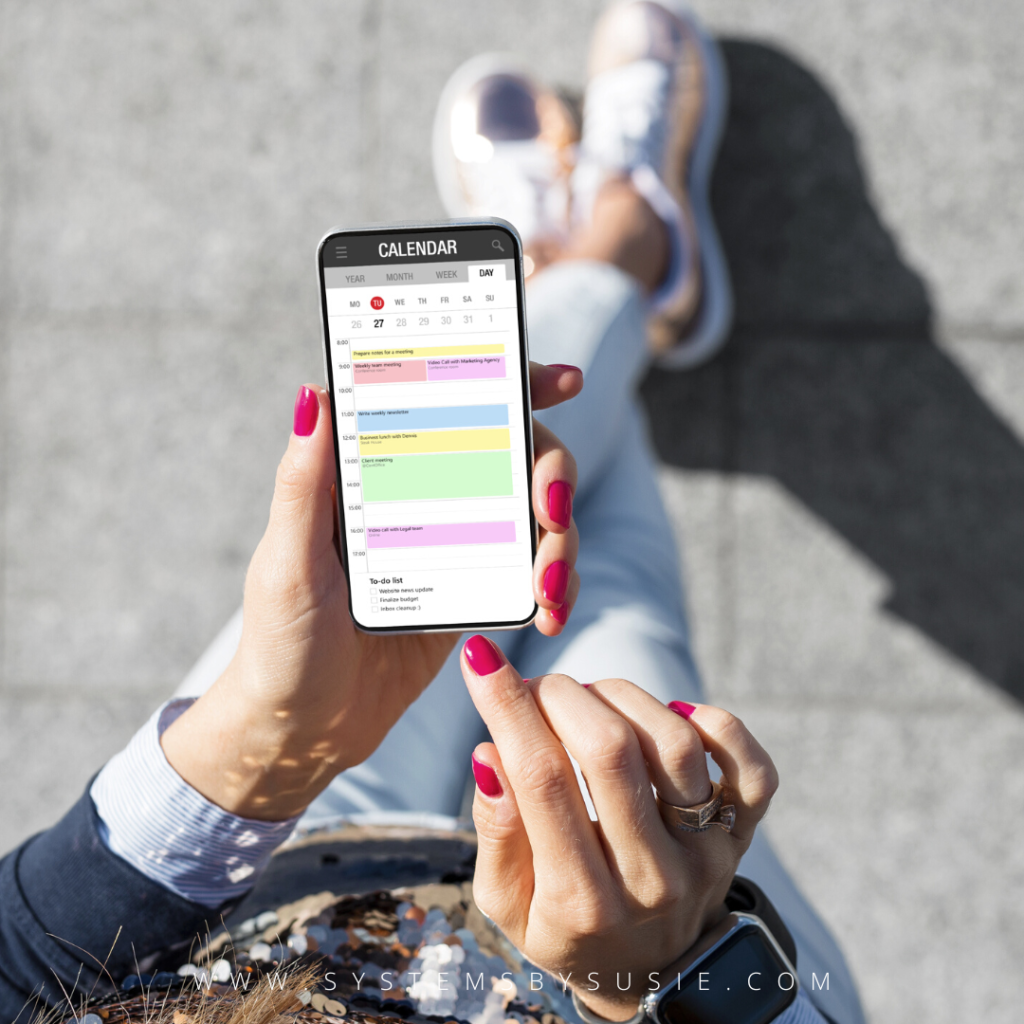
Organizing Assignments & Notes
In younger grades, teachers usually have a plan for helping keep littles organized through a binder or folder that goes back and forth from home to school. In it there’s a section for important papers (things needing to be returned to school), one for assignments, one for spelling words or sight words, and another for daily work that is coming home to stay.
As they move up, more and more of the responsibility to keep their assignments, notes, and papers falls on the students and it’s important to work out what kind of systems works best for your child.
If they have a hard time keeping up with more than one thing at a time, consider an accordion file or binder with sections for each class. Everything goes in one place (including loose-leaf notes, returned papers, study guides, etc.), and comes home every day. One helpful addition to this system would be an “action items” section, for assignments that need to be done ASAP or permission slips that need to be signed.
Other kids may appreciate more separation, and would prefer to have a folder and notebook for each class that are clearly labeled, easy to grab and a bit lighter in the backpack. In each folder, I would have a section for “Action Items” and one for “Take Home Papers.”
No matter which solution you choose, be sure to evaluate it at the end of each grading period. Did it work? Were assignments missed or forgotten? What can you modify to make the system work better?
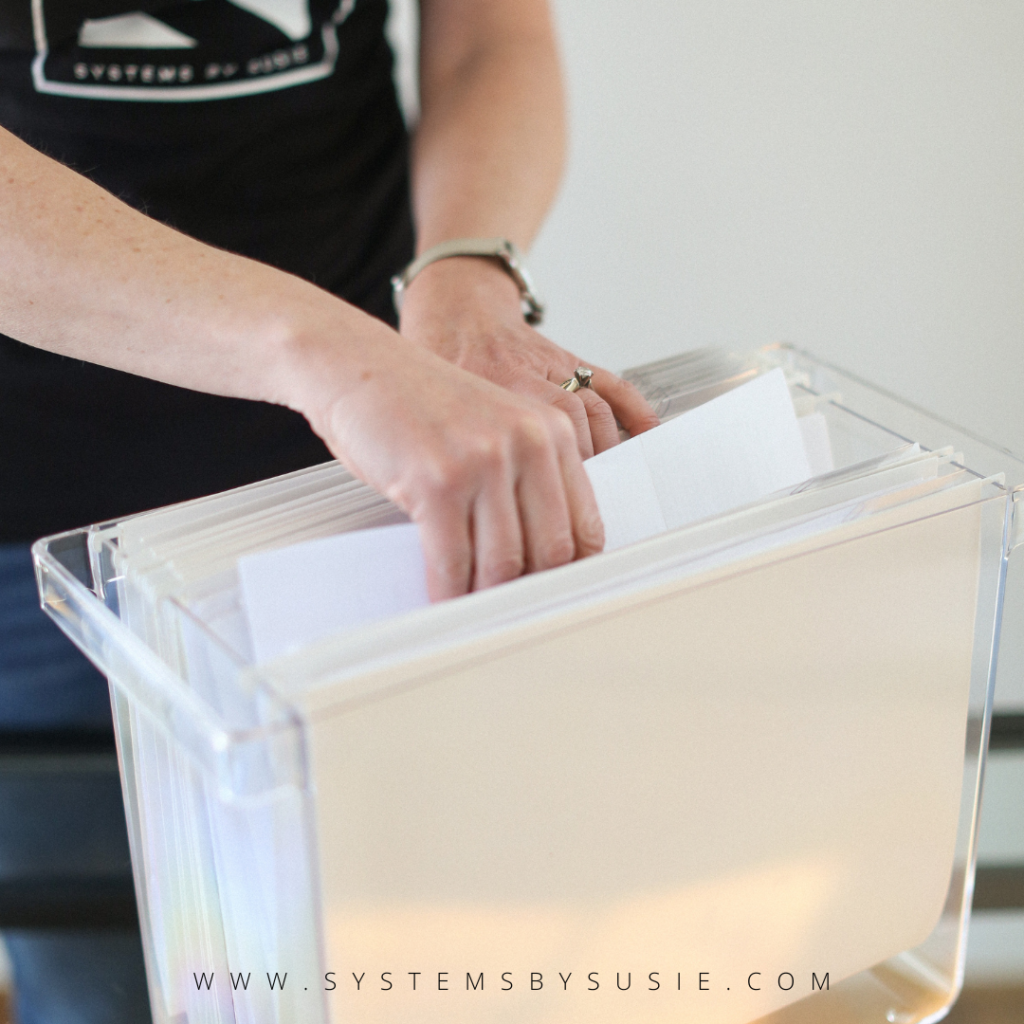
It’s also important to have a more long-term system at home. Keeping everything from the entire year in either a folder or binder would get messy and confusing fast. Set up a simple file box with hanging files for each subject that they can keep in their room or homework area. At the end of each week, month, grading period, or unit (whatever works), empty out notes, worksheets, returned assignments, etc. into the appropriate folders in the box. Everything will be there if it needs to be referenced for a midterm or final, and it’s not languishing at the bottom of a backpack or locker!
Lockers
When it comes to lockers, keep it simple. Add a shelf to take advantage of the height and make textbooks more accessible. Pottery Barn Teen has some cute options. Also, think through a system for keeping a few extra supplies handy, like pens and pencils, chargers, and paper. These magnetic organizers from Amazon are a great choice.
I would caution against storing folders, binders, and notebooks in the locker. Encourage your student to keep them in their backpack if they aren’t too heavy, so they don’t risk forgetting them at the end of the day.
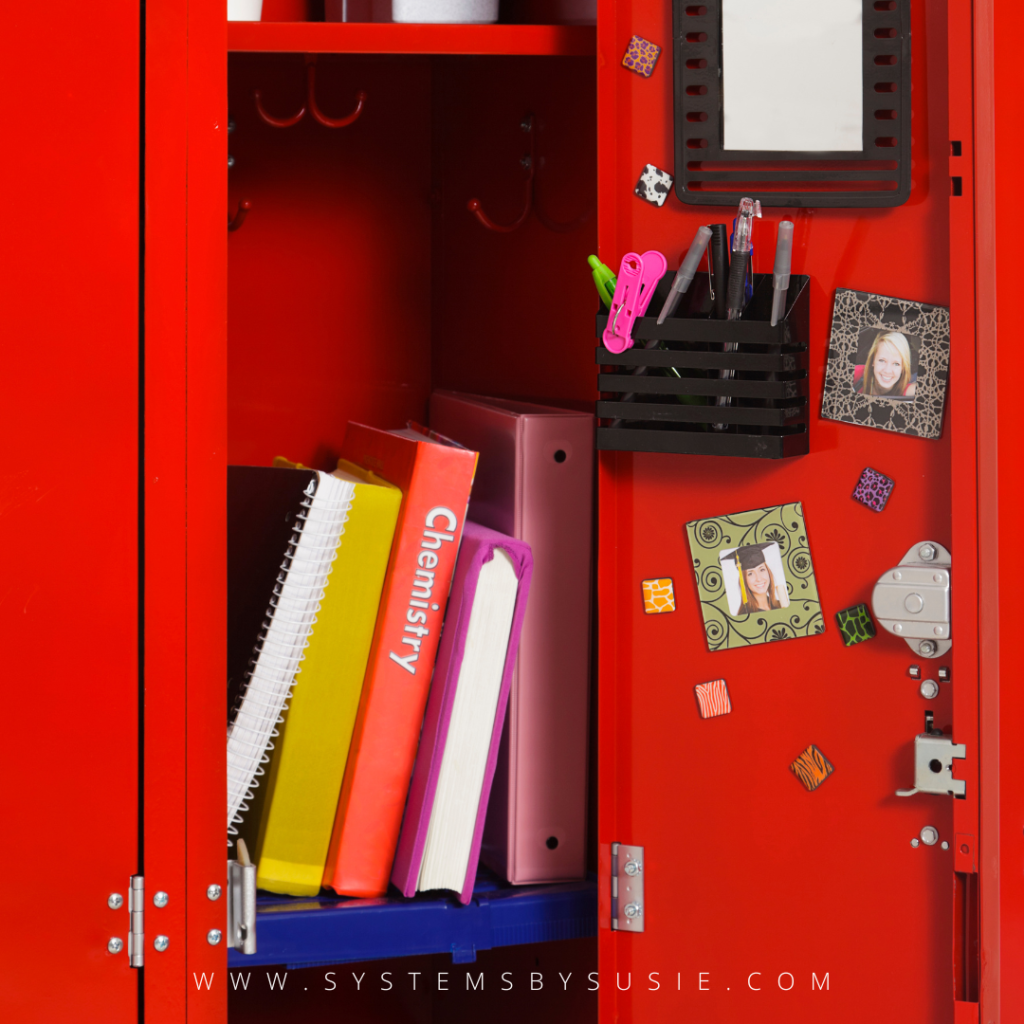
Computers & Tablets
In 2022, we certainly can’t forget about the importance of digital organization as well for students who are assigned or regularly use a computer for school. Once again, we’ll start at home by having a “charge your devices” note on the bedtime checklist.
At the beginning of the school year, have your student set up a desktop folder on their home computer or tablet labeled “School 2022-2023” and in it, create a folder for each class and school activity. This will give them some basic organization to start, and you can work with them to create new subfolders as needed for larger projects or papers. A similar system can be set up in the internet browser’s favorites or bookmarks. This is especially helpful for classes like history and English, where they will likely be doing a lot of research.
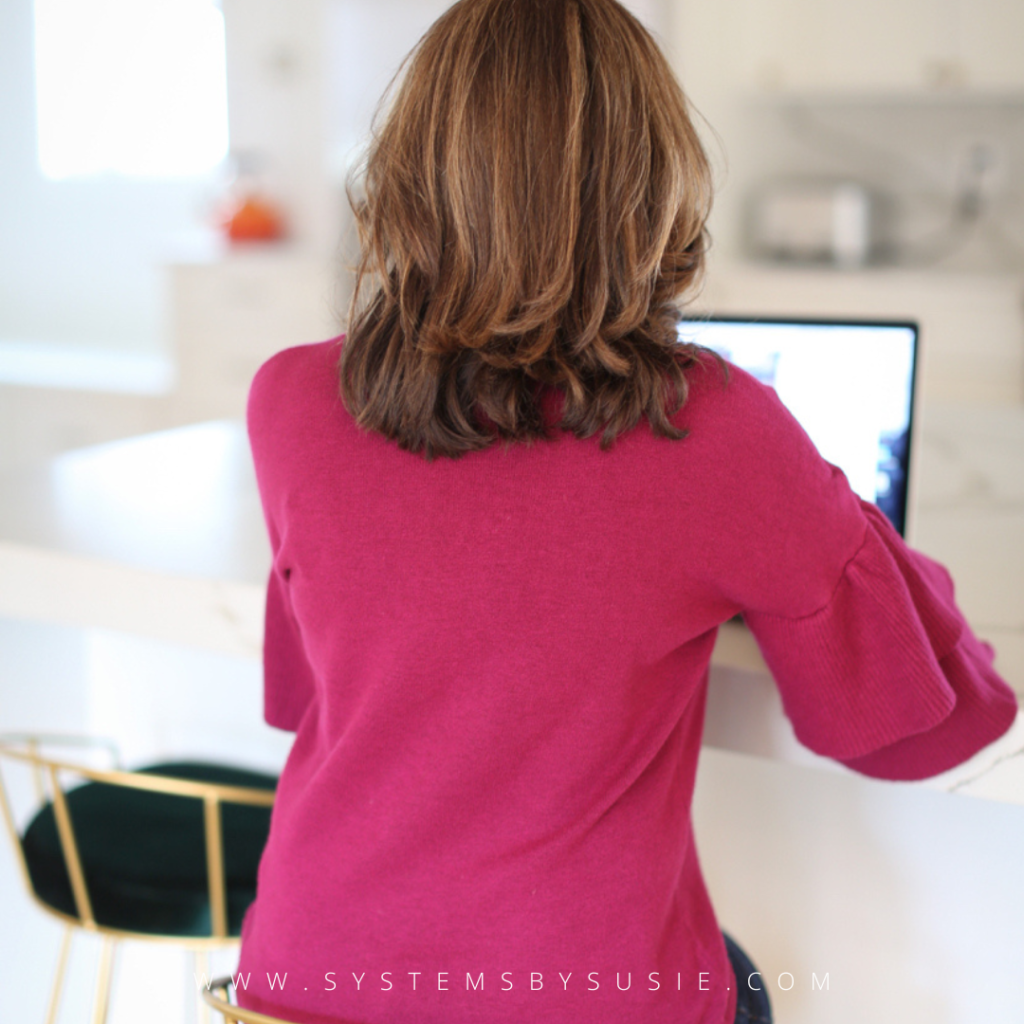
If using different computers at home and at school, don’t forget to keep extra flash drives in a pouch in their backpack, or in their locker organization system.
______________________________________
I know that keeping kids organized in life and at school can feel overwhelming. And some are more naturally drawn to these systems than others. But by starting early when kids really thrive in routine and making it a process that gradually adds more responsibility to their plates, my hope is that by they time they are in high school, they will be successfully managing their own schedules enough that you will have one less thing to worry about.
Organization is just another life skill to teach. But one that will apply to so many different aspects of their future. I hope you will give some of these systems a shot, no matter the ages of your kids!
When in doubt, start with home-based systems and work your way up to filing systems and digital calendars. Here are two previous blogs to reference when it comes to getting your home ready for a busy school year:
- Back to School Challenge
- Systems that Save You Time
If you feel like your home needs some professional help to get through the rest of the school year, it’s not too late to get on our schedule. With the kids out of the house each day, it can be a great time to reassess and reset.
Happy Organizing!

